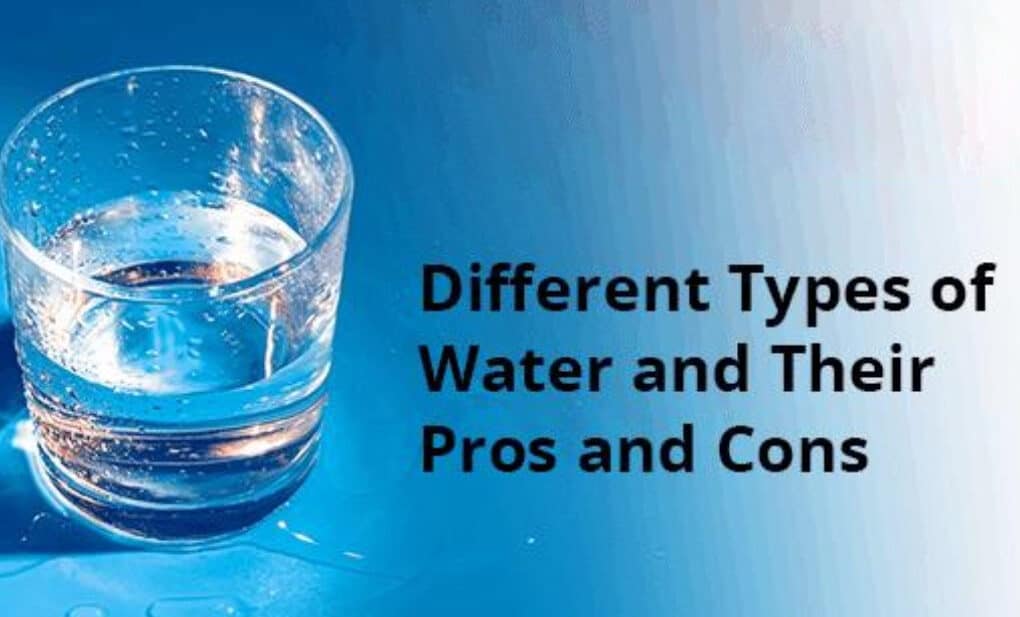Keeping your body properly hydrated offers a lot of health benefits. However, drinking just any kind of water isn’t ideal. The earth’s surface is 71% water. While 97% is found in seas and oceans, only 3% is fresh water. Of this 3%, 79% is found in glaciers and ice caps, 29% in groundwater, and 1% as surface water. So, of the total, less than 1% is drinkable and available for human consumption, found on the surface and in underground aquifers.
Let’s look at some common classifications of water as we refer to them, and understand what each type stands for and whether it is safe for consumption.
Different Types of Water:
1. Tap Water
The water that you get from your faucet is called tap water. This is generally sourced from a dam or river, treated at a water treatment facility, stored in a reservoir, and then supplied to homes through water pipelines. While the quality of tap water generally has to meet the government guidelines and often does at the water treatment plant, intermittent supply through old distribution pipelines (which run parallel to sewage lines in many cities of India), can render this water unsafe, especially during peak summer and during the rainy season which is prone to flooding.
For this reason, the use of a water purifier in your home at the point of use is often a practical and safe solution.
2. Mineral Water
Mineral Water, as the name suggests, is water enriched with vital minerals, mostly calcium and magnesium. Natural mineral water is taken from underground sources which are rich in mineral content and then packaged and sold as natural mineral water.
Now, as you can imagine, this process of bottling at the source and then distributing is quite expensive as compared to tap water, but the natural mineral content does provide some health benefits. This includes aiding the digestive system, promoting better immune health, and so on.
3. Packaged Drinking Water/Bottled water
Simply put, packaged drinking water is water that has been treated with technologies such as Filtration, Reverse osmosis, UV, and Ozone in a water treatment plant and then filled into bottles/pouches and sealed. Often, in a bid to render the water “healthy,” calcium and magnesium salts are added in defined proportions to make it “mineral water”.
The lacunae in this type of water are often in the treatment processes and in the handling and distribution itself. Unless the process is foolproof by combining all the technologies in their correct order, and the handling and distribution is done hygienically; bottled or packaged drinking water may be microbiologically unsafe. Exposure of these plastic bottles to sunlight may also be responsible for some harmful chemical reactions which in turn affect the health of those who consume this water.
Installing a home water purifier and using reusable bottles made of glass or stainless-steel help to overcome the problems associated with packaged drinking water sold in plastic bottles or pouches.
4. Spring Water or Glacier Water
Spring Water or Glacier Water is sourced from, as you guessed it, springs and glaciers. Since water is collected right from the source, it is generally clean, and free from toxins and other unwanted particles. In some cases, depending on the spring or glacier it is collected from, the water might even be infused with vital minerals.
If you get your spring or glacier water from authentic brands like Evian or Arrowhead, then you can rest assured that you are getting some of the best drinking water in the world. However, it is going to be very expensive compared to regular packaged water, let alone tap water.
But don’t let the price tag let you choose other lesser-known brands. Some companies are guilty of selling raw spring/glacier water without testing it. As such, if it contains any toxins, germs, or bacteria, then that can get into your system and make you ill.
5. Well Water
Well, Water is not commonly seen in the cities and urban areas. However, it is a prime source of water supply in most rural regions. When it rains, the water trickles down the crevices into the soil and starts accumulating underground. A well is then drilled on top of one of these natural underground water reservoirs to directly collect from the water source beneath.
This water is completely free to use, and if you have a well-constructed right in your backyard, it is probably the most convenient source of drinking water. But with that being said, it does carry some risks. The raw water collected from the wells might be infested with tons of bacteria. Also depending on the locality, it can have high traces of iron and even arsenic, the latter of which can lead to toxic metal poisoning.
Therefore, it is important to do some research as to whether the well water can be consumed directly. However, even if it has some amounts of contaminants, you can always treat and purify the water to make it drinkable by using appropriate water purification techniques such as Reverse Osmosis or UV.
6. Distilled Water
Distilled Water is any source of water that has been purified using the process of distillation. This involves boiling the water until it turns into water vapor, then capturing the gas and condensing it back into its liquid state. This is by far one of the safest types of water devoid of any contaminants and bacteria.
However, is distilled water safe to drink? The lack of toxic contaminants, germs, and bacteria does make it seem like the safest kind of drinking water. But it is not! You see, besides lacking all the harmful impurities, distilled water also misses out on essential minerals and salt. This can be harmful to your body. Non mineralized water tends to pull minerals from wherever it can. As such, drinking too much-distilled water can result in a mineral deficiency in your body as well as teeth, which isn’t a good thing.
7. Hard Water
When the water has a high mineral content, it is called hard water. This happens when water percolates through several layers of limestone, chalk, and even gypsum which are high in calcium, magnesium carbonates, bicarbonates, and sulfates. Another reason for increased hardness in some areas is the depleting level of groundwater due to over-extraction. As a result, these compounds contaminate the water, increasing its hardness. Other elements in hard water may be compounds like iron, aluminum, and manganese which also add to hardness.
The extra mineral content doesn’t make this water good for your health. As per the IS 10500 standards of potable drinking water, there are limits to various contaminants of hard water and it is advisable not to consume water with mineral content beyond those limits. When such is the case, a RO+UV water purifier can help in bringing hardness under control and improve the taste while disinfecting it at the same time.
Hard water is identified in other ways too. When soap does not lather easily, one can safely say that the water is hard. Bathing in hard water can cause dry skin and dull hair. Also, merely having hard water pass through your plumbing fixtures can cause corrosion and irreversible damage, to prevent this a softener can be installed.
8. Alkaline Water
Alkaline water is a much-hyped term these days. While it goes without saying that you shouldn’t drink acidic water, many people have the idea that drinking alkaline water can help neutralize the acid in the body, which can then help slow the aging process and even prevent cancer. However, there is very little scientific evidence to showcase that alkaline water has these many health benefits.
Plus, although there is no proof that alkaline water offers these miraculous health benefits, we also don’t have any confirmation that it is harmful. Generally, it is safe for drinking, but there are some cases where it may cause some issues.
For example, alkaline water can reduce stomach acids from effectively killing off harmful bacteria you might consume with your food. Furthermore, drinking too much alkaline water can lead to metabolic alkalosis, which can cause nausea and vomiting.
As such, the general rule of thumb would be to drink water that has a normal PH level. Drinking water that has an uncomfortably high PH (alkaline) level or too low PH level (acidic), can and will have detrimental effects on your body.
Wrapping Up
So, these were the eight most common classifications of water. As you can see, most of them have serious cons alongside their many advantages. Overall, looking at how the environment is getting increasingly polluted by the day, we must take responsibility for keeping our water clean and safe to drink.
Demanding that the government or administrative body provides water free from any contaminants at your point of use, may not be practical, keeping in mind aging distribution systems, rising population, rapid urbanization, and general water stress. Taking a practical approach and opting for a home water purification system based on your water quality is the way forward.

